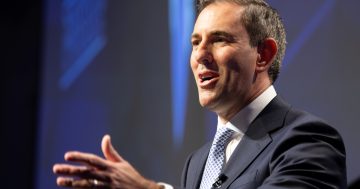Like dieting or exercise, budgeting requires consistency to produce results says Chad Rixse.
 Budgeting can be difficult to make into a habit, as it can feel strict and difficult.
Budgeting can be difficult to make into a habit, as it can feel strict and difficult.
This is a problem I run into all the time with clients, and it’s not uncommon to see people spend beyond their means as a result.
Because of this, a budget should be simple and easy to follow, while also giving you enough freedom to live your life. After all, budgets are meant to give you control over your money, not take it away.
Not all budgeting methods are helpful, though. So it’s important to try different ones until you find one that works for you. However, if you’re looking for a place to start, this “bucket budgeting” method is a particularly simple and easy solution to try.
Step 1: Organise your buckets
A “bucket budget” organises your expenses into “buckets.”
This can be done in many ways, but the method I’ll cover here involves separating your expenses into fixed, variable and savings.
PLAY SOUND
Fixed expenses don’t change from month to month and include things such as your mortgage payment or rent, other common fixed debts such as a car loan or student loans, insurance, a gym membership, phone and internet bills and subscriptions, for example.
Fixed expenses are predictable and plannable, so they go in their own “bucket.”
Variable expenses vary from month to month and can include everyday spending such as groceries, gasoline, dining out and entertainment, among others.
Variable expenses are unpredictable and often where people overspend, so they go in their own “bucket,” too.
Pay particularly close attention to this bucket as you might have recurring expenses such as app or software subscriptions that you aren’t using anymore and may have forgotten about.
Finally, we have savings because paying yourself first and saving for the future are important. Building an emergency fund, saving for a down payment on a house or putting money into a retirement account are all examples of this bucket.
The goal is to make your savings their own bucket on your budget so you can prioritize them over spending.
Step 2: Set a spending target
Once you have all of your monthly expenses separated into their respective buckets, your next step is to set a total monthly spending target for your variable expenses.
By setting a spending target for your variable expenses, you’re holding yourself accountable for living within your means, and you’re simplifying the management of your budget by only needing to track a certain dollar amount of expenditures as opposed to many individual categories.
As a starting point, look at all of your spending on variable expenses for the past three to six months and calculate the average.
Now that you have this initial monthly spending target for variable expenses, you need to stress-test it to see if it holds water. The two primary questions you need to answer to figure out whether your initial number is a good spending target are:
* Are your savings goals being met?
* Is your overall cash flow positive or negative?
If you’re not meeting your savings goals and are spending beyond your means with your initial spending target, then it’s not the right target number, and you need to look at what lifestyle or other expenses you can cut out.
You should plan to review your budget at least every six months or whenever you experience a major financial event. These include the birth of a child, a loved one’s death, a job change or loss, buying real estate or a business or covering educational expenses for your kids.
Step 3: Implement
With your spending target for variable expenses now dialed in, it’s time to put your bucket budget to use.
There are two main options for implementation: the bank account method or the credit card method.
With the bank account method, you set up a separate bank account and debit card for the sole purpose of variable expenses and automate transferring the amount of your spending target into that bank account every month.
You do not have to worry about what you spend on variable purchases if you keep them in a separate bank account. You just have to make sure you do not spend more than you put in that account, and you always know how much you have for that.
The bank account method is the easiest bucket budget method because it prevents overspending.
The credit card method, on the other hand, risks overspending and accruing unwanted debt if you aren’t careful with how you use it.
With this method, you need to either closely watch the balance on the card or set up automated spending and balance alerts (through the card or a personal finance app) once you’ve reached your target.
You should also set up regular auto payments to pay your credit card balance in full every month.
If you’re using the bank account method, you can set up automatic transfers to your variable expense bank account every payday. If you have direct deposit, you could also have that target amount automatically deposited from your paycheck instead.
For the credit card method, it’s the same concept, except you make payments to your credit card to pay off your spending for that pay cycle.
Step 4: Stay consistent to be successful
Bucket budgeting is a simple and effective financial management tool that can be a significant catalyst for achieving your other financial goals.
By organising your expenses into fixed, variable and savings buckets, setting a variable expense spending target and using a separate bank account or credit card, you can simplify your budgeting and create a solid foundation for your other goals.
*Chad Rixse is Director of Financial Planning | Wealth Advisor | Chief Compliance Officer










